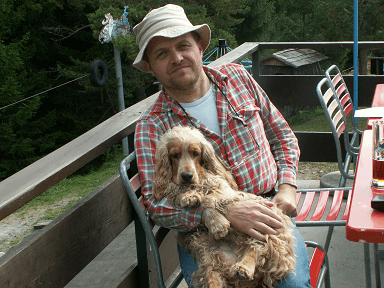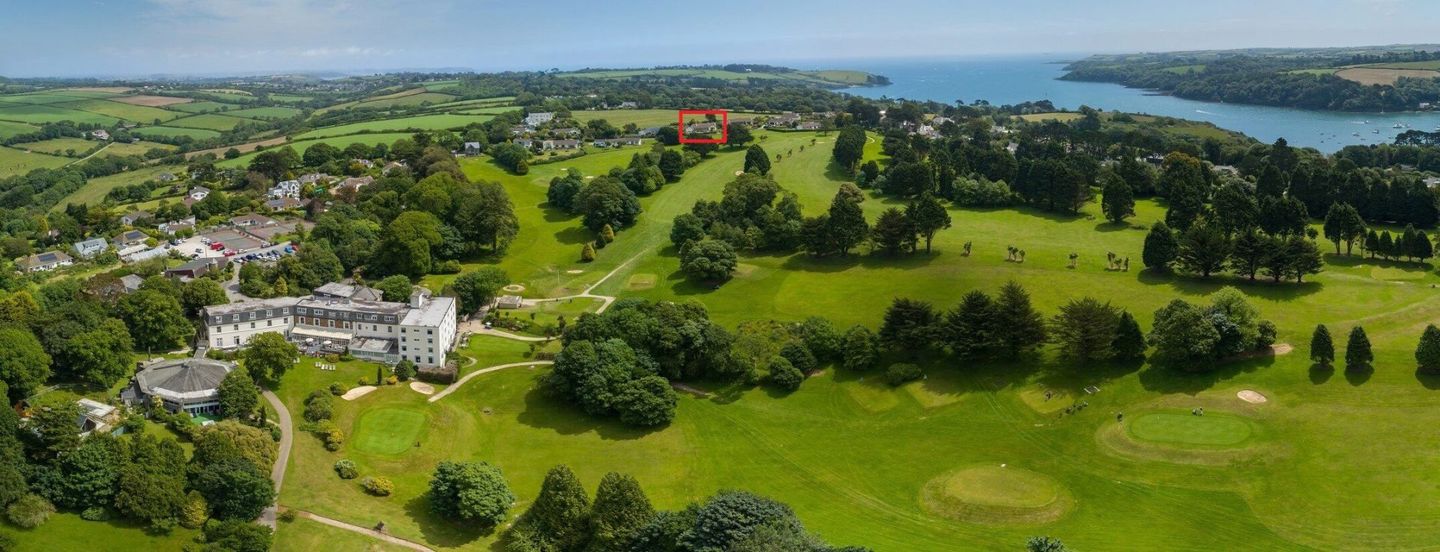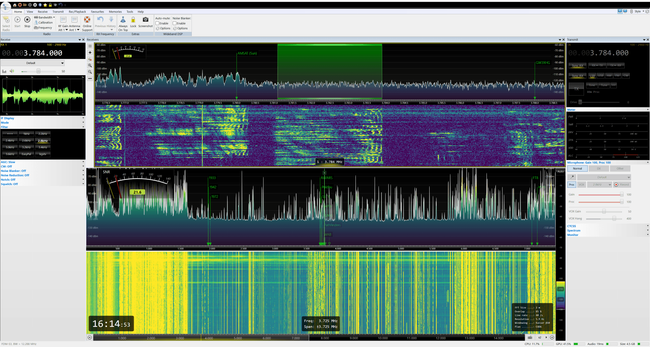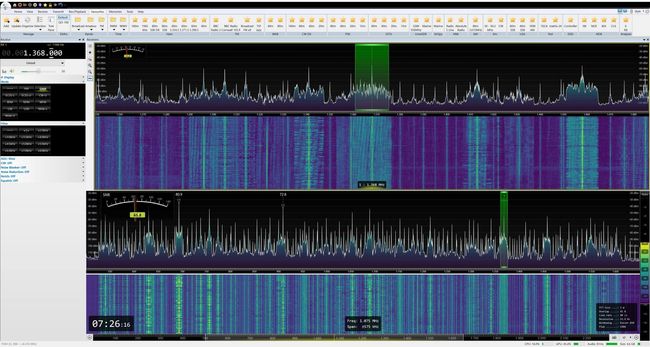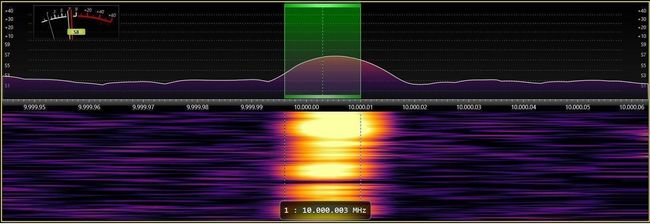Simon's super website
Simon Brown, born in Stamford, Lincolnshire, England on October 2nd, 1957: "Ten little fingers, Ten tiny toes, The sweetest of smiles And a cute little nose". From the age of eleven fascinated by electronics and especially radios. First transmission experiments were sadly unsuccessful - connecting a microphone in series with the mains power cable of an old radiogram. Despite this and similar setbacks the UK Radio Amateur Examination was passed in the winter of 1973. First callsign GD8IQM (February 26th, 1974), then after passing the CW exam at 12 wpm GD4ELI (September 18th, 1975). Swiss licence HB9DRV issued on June 12th, 2001.
1976 to 1979 studied for a degree in electronic engineering and mathematics at Bangor University, North Wales, passed with 1st class honours. Never worked as an electronics engineer, instead computer software was much easier and better paid in the early 1980's. Left UK for Germany in 1986, then Belgium in 1988 followed by Switzerland in 1989. Retired to Mawnan Smith, Cornwall with Laika the Cocker spaniel.
In 2001 started the program FT-817 Commander followed by Ham Radio Deluxe in mid-2003 with Peter Halpin PH1PH (sadly now SK). As of January 1st, 2010 concentrating 100% on radio-related software; founder of SDR-Radio.com specialising in software defined radio.
Very honoured to have been awarded the Dayton Hamvention 2010 award for technical excellence, following in the footsteps of Tom McDermott, N5EG (2008) and Copthorne "Cop" Macdonald, VY2CM (2009).
Awarded the RSGB's Luis Varney Cup in 2020 for developing SDR console, enabling amateurs around the world to explore the possibilities offered by the QO-100 geostationary satellite in particular, and SDR in general.
Awarded the G3AAJ cup by AMSAT UK for SDR Console's contribution to the QO-100 satellite and also for the new SDR Television which is DATV software.
Getting older and grumpier...
Amateur Radio
Amateur radio, also known as ham radio, is a popular technical hobby and volunteer public service that uses designated radio frequencies for non-commercial exchange of messages, wireless experimentation, self-training, and emergency communications[1][2]. It is the only hobby governed by international treaty, and radio amateurs make use of their frequencies in various ways, such as contacting people worldwide, competing in international competitions, technical experimentation, communication through amateur space satellites, and providing communications during emergencies[2]. Amateur radio operators are authorized to use specific frequency bands allocated for their use and play a crucial role in emergency communication and disaster relief efforts[1].
Citations:
[1] https://en.wikipedia.org/wiki/Amateur_radio
[2] https://rsgb.org/main/get-started-in-amateur-radio/what-is-amateur-radio/
[3] https://www.hamradio.co.uk/amateur-radio
[4] https://www.ofcom.org.uk/news-centre/2024/amateur-radio-more-freedom-to-innovate
[5] https://www.hamradiostore.co.uk/amateur-radio
Licence
To obtain a licence for amateur radio in the UK, individuals must pass an examination at one of three levels: Foundation, Intermediate, or Full. The Foundation exam is multiple choice and tests basic technology and the terms and conditions of the UK Amateur Radio Licence. The Intermediate exam includes a practical assessment and a multiple-choice paper. The Full exam is more comprehensive. Successful candidates can then apply for a license from Ofcom, the UK communications regulator[1][3].
The Foundation Licence is an introductory licence that allows operators to transmit on VHF/UHF and HF bands up to a power of 10 watts. To prepare for the exam, individuals can take an online course, study at a local amateur radio club, or use self-study materials such as the Foundation Licence Manual[3].
The process for obtaining a ham radio license in the UK has been simplified, and there is no longer a requirement to learn Morse code. Successful candidates can apply for their amateur radio license through the Ofcom portal. The licence is valid for five years and can be renewed online[4].
In summary, to obtain an amateur radio license in the UK, individuals should follow these steps:
1. Study for the exam, using online resources, local clubs, or self-study materials.
2. Take and pass the Foundation, Intermediate, or Full exam.
3. Apply for the license through the Ofcom portal.
4. Renew the license every five years if needed[1][3][4].
Citations:
[1] https://www.ofcom.org.uk/__data/assets/pdf_file/0026/109547/guidance-become-radio-amateur.pdf
[2] https://rsgb.org/main/get-started-in-amateur-radio/what-is-amateur-radio/
[3] https://www.essexham.co.uk/how-to-become-a-ham
[4] https://moonrakeronline.com/blog/how-to-get-ham-radio-license-in-the-uk
[5] https://en.wikipedia.org/wiki/Amateur_radio
GD8IQM, GD4ELI
First licenced while living on the Isle of Man. Also known as Mann, this is a self-governing British Crown Dependency located in the Irish Sea between Great Britain and Ireland. It has its own parliament, laws, traditions, and culture. The island is about 52 kilometres long and 22 kilometres wide, with an area of around 572 square kilometres. It is best known for its famous motorcycle race, the annual Tourist Trophy (TT) Races, and its status as a UNESCO Biosphere. The Isle of Man has a rich history, with evidence of human occupation dating back to around 6500 BC. The island's economy has benefited from regulatory arbitrage in various contexts, such as low taxes, which have attracted wealthy individuals and industries like offshore financial services. The Isle of Man is also a popular tourist destination, offering a unique blend of history, heritage, and natural beauty, including hiking, mountain biking, and rock climbing opportunities[1][2][5]. For more information, you can visit the official website of the Isle of Man Government[3].
Citations:
[1] https://en.wikipedia.org/wiki/Isle_of_Man
[2] https://www.visitisleofman.com
[3] https://www.gov.im
[4] https://www.tripadvisor.co.uk/Tourism-g190927-Isle_of_Man-Vacations.html
[5] https://www.historic-uk.com/HistoryMagazine/DestinationsUK/Isle-of-Man/
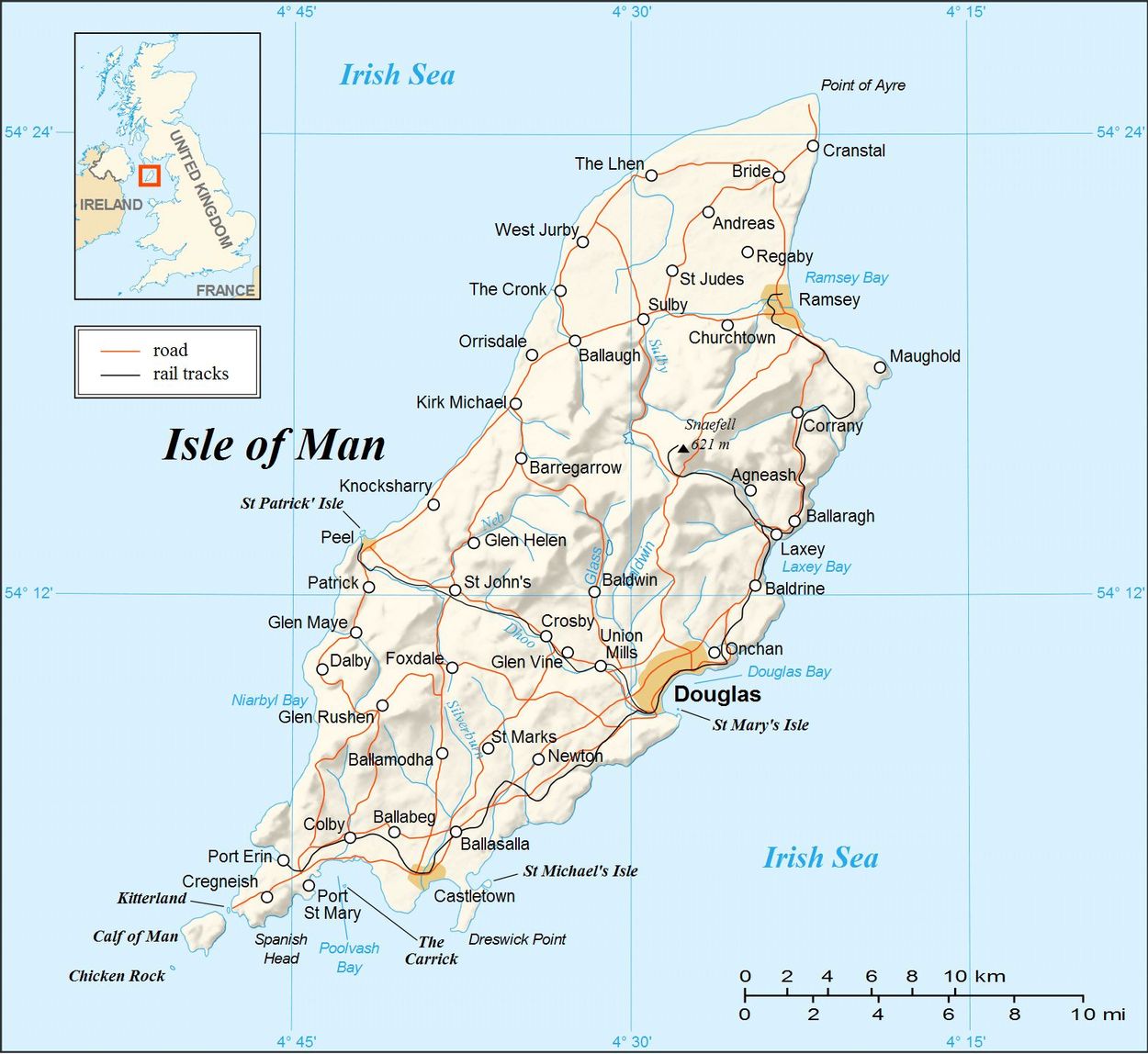
UCNW Bangor
Bangor is a cathedral city and community in Gwynedd, North Wales. It is the oldest city in Wales and has a population of 18,322 as of 2019. The city is known for landmarks such as Bangor Cathedral, Bangor University, and Garth Pier. It is also a sub-regional center for North Wales and a lively university town with a good shopping scene. Bangor offers various leisure facilities, including pool, walking, and cycling paths. The city is located within The Slate Landscape of North West Wales UNESCO World Heritage Site, and the Snowdonia Slate Trail starts in Bangor, making it a great place for outdoor activities and exploring the area's slate heritage[1][2][3][4]. If you're interested in visiting Bangor, you can find accommodation options, attractions, and activities to do in the area[4].
Citations:
[1] https://en.wikipedia.org/wiki/Bangor,_Gwynedd
[2] https://www.visitwales.com/destinations/north-wales/things-do-bangor
[3] https://www.gwynedd.llyw.cymru/en/Businesses/Regeneration/Bangor-Strategy-and-Vision.aspx
[4] https://www.visitsnowdonia.info/bangor
[5] https://www.metoffice.gov.uk/weather/forecast/gcmnf1dn6New Paragraph
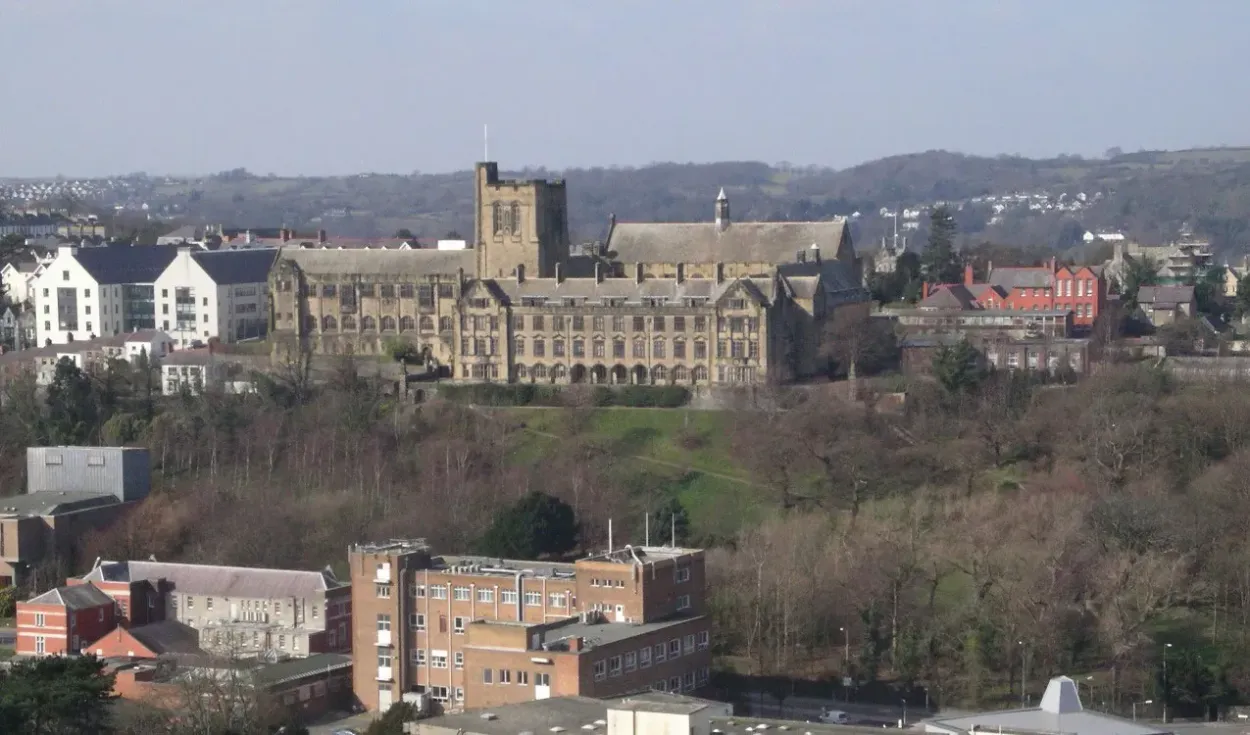
Laax, HB9DRV
Lived in Laax for 23 years, licenced as HB9DRV; very expensive! Laax is a popular destination in Switzerland known for its extensive skiing and snowboarding opportunities. The Flims-Laax-Falera ski region offers 235 kilometres of piste across 100+ square kilometres of snow-assured slopes, making it one of Switzerland's large, connected winter sports regions[2]. The ski resort of Flims-Laax-Falera provides 214 km of slopes and 25.8 km of ski routes, catering to visitors of all levels with runs for skiing, snowboarding, and freeriding[3]. Laax is particularly renowned for its modern lifts, vast terrain, long piste trails, challenging off-piste skiing, and freeride routes[5].
Laax attracts snowboarders from around the world with its professional Snowboard Freestyle Academy, various snowboarding events, freeride areas, halfpipe, and fun park around the Crap Sogn Gion mountain[2]. The resort offers activities for all guests, including night activities, winter hiking, sledging, and family-friendly options[2]. Additionally, Laax is known for its monstrous snow parks and facilities that cater to freestylers and intermediates alike[5].
The resort is divided into Laax, Flims, and Falera. Laax is described as more modern and lively, while Flims is quieter and more traditional. Visitors can enjoy a range of off-slope activities such as ice skating, Freestyle Academy jumps, ice hockey, and swimming pools[4]. Laax also offers a variety of accommodations ranging from modern hotels to traditional chalets[5].
Citations:
[1] https://www.flimslaax.com/en
[2] https://www.myswitzerland.com/en-gb/destinations/laax/
[3] https://www.skiresort.info/ski-resort/laaxflimsfalera/
[4] https://www.onthesnow.co.uk/graubunden/laax/ski-resort
[5] https://www.powderhounds.com/Europe/Switzerland/Laax.aspx
The best time to visit Laax, Switzerland, for warm-weather activities is from early July to mid-August, with the peak time being the first week of August. During this period, the weather is favorable for outdoor activities with clear, rainless days and temperatures between 65°F and 80°F[3][4]. This time offers pleasant temperatures and almost no precipitation, making it ideal for exploring the region and enjoying various outdoor experiences. Additionally, in spring (April and May), as the snow gives way to greenery, Laax offers a unique experience with activities like hiking, biking, and relaxing spa visits[5].
Citations:
[1] http://www.laax-gr.ch
[2] https://www.triphobo.com/places/laax-switzerland/best-time-to-visit
[3] https://weatherspark.com/y/63439/Average-Weather-in-Laax-Switzerland-Year-Round
[4] https://weathermondo.com/switzerland/laax-3613086/
[5] https://www.flimslaax.com/en/spring-in-the-mountains
[6] https://www.onthesnow.co.uk/graubunden/laax/ski-resort
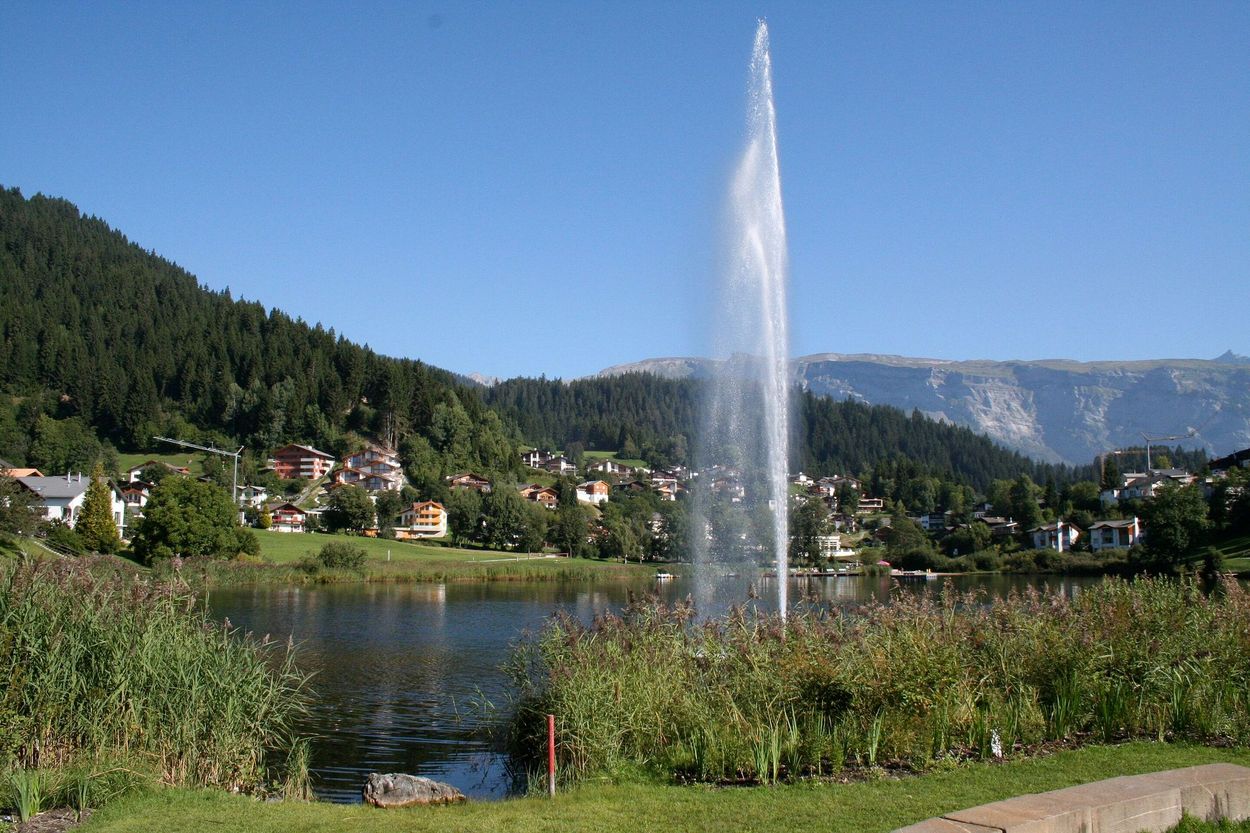
Digital Signal Processing
Main activity is writing digital signal processing (DSP) software in C++ and assembler, specialising in software defined radio (SDR). Digital signal processing (DSP) is the use of digital processing to perform a wide variety of signal processing operations. It involves the manipulation of digital signals, which are sequences of numbers representing samples of a continuous variable in a domain such as time, space, or frequency. DSP has applications in various fields such as audio and speech processing, sonar, radar, spectral density estimation, digital image processing, data compression, and telecommunications, among others[1]. Digital Signal Processors (DSPs) take real-world signals that have been digitized and then mathematically manipulate them. They are designed to perform mathematical functions like addition, subtraction, multiplication, and division very quickly. DSPs are used in a wide variety of applications, including audio and video processing, telecommunications, and control systems[2]. For those interested in learning more about DSP, there are resources available such as journals, books, and online courses[3][4][5].
Citations:
[1] https://en.wikipedia.org/wiki/Digital_signal_processing
[2] https://www.analog.com/en/lp/001/beginners-guide-to-dsp.html
[3] https://www.sciencedirect.com/journal/digital-signal-processing
[4] https://www.dspguide.com
[5] https://ocw.mit.edu/courses/res-6-008-digital-signal-processing-spring-2011/
C++
Projects are written mainly in C++ with some assembler. Writing C++ software involves several key steps to ensure a successful and efficient development process. Here are some essential aspects to consider when writing C++ software:
- Planning and Design: Before writing any code, it's crucial to plan and design your software. This involves defining the problem you're solving, outlining the features and functionality, and creating a high-level design of the system.
- Use of Object-Oriented Principles: C++ is an object-oriented programming language, so it's important to utilize its features such as classes, objects, inheritance, and polymorphism to create modular and reusable code.
- Code Organization: Maintain a well-organized codebase by using proper file and folder structures. Group related code together and follow best practices for naming conventions.
- Memory Management: C++ requires manual memory management, so it's essential to allocate and deallocate memory properly to avoid memory leaks and undefined behavior. Consider using smart pointers and RAII (Resource Acquisition Is Initialization) to help manage resources.
- Error Handling: Implement robust error handling mechanisms to gracefully handle unexpected situations and prevent crashes or data corruption.
- Testing: Write comprehensive unit tests to verify the correctness of your code. Consider using testing frameworks like Google Test or Catch2 to automate the testing process.
- Performance Considerations: C++ is known for its performance, so pay attention to performance considerations such as algorithm efficiency, data structures, and optimization techniques.
- Documentation: Write clear and concise documentation for your code, including comments within the code itself as well as external documentation for users and other developers.
By following these guidelines, you can create well-structured, efficient, and maintainable C++ software.
Assembler
Assembly language, also known as "assembler," is a low-level programming language that provides direct access to a computer's hardware resources, such as the CPU, memory, and I/O ports. It uses mnemonic instructions to represent machine code instructions, making it more powerful than higher-level languages such as C++, Java, or Python. Assembly language is often used in performance-critical applications where speed and efficiency are essential, such as in gaming, high-frequency trading, or certain scientific computing tasks[2].
One of the key features of assembly language is its ability to facilitate fast and efficient code writing. Although coding in assembly language is quite complex, the language is much more flexible than other high-level languages. It allows for highly optimized code that can run faster and more efficiently than those written in higher-level languages. Additionally, assembly language allows programmers to directly access the computer’s hardware resources, making it an ideal language for systems programming, which involves writing code that interacts with the operating system and the computer’s hardware devices[2].
While programming in assembly language can be challenging, it offers the benefit of allowing programmers to write highly optimized code for specific hardware, as assembly language instructions map directly to the machine language instructions that the CPU can execute[2].
Citations:
[1] https://users.ece.utexas.edu/~valvano/assmbly/intro.htm
[2] https://www.spiceworks.com/tech/tech-general/articles/what-is-assembly-language/amp/
[3] https://youtube.com/watch?v=zmzw5DZzqtc
[4] https://stackoverflow.com/questions/2684364/why-arent-programs-written-in-assembly-more-often
[5] https://blog.devgenius.io/getting-started-writing-assembly-language-8ecc116f3627?gi=cddee7f132da
Where's Simon?
Mawnan Smith
Mawnan Smith is a village in the civil parish of Mawnan in south Cornwall, England, United Kingdom. It is located approximately three miles south of Falmouth and had an estimated population of 1020 in 2019. The village is known for its picturesque setting, with thatched cottages and a historic church. Additionally, Mawnan Smith is home to the beautiful woodland of Kennall Vale, which has remnants of its industrial past as a gunpowder factory. The village is also associated with sightings of the British cryptid, the Owlman. Mawnan Smith is considered by many to be one of the most perfect villages in Cornwall[1][2][3][4].
Citations:
[1] https://en.wikipedia.org/wiki/Mawnan_Smith
[2] https://www.cornwalls.co.uk/mawnan-smith
[3] https://www.cornwalls.co.uk/attractions/mawnan-smith
[4] https://www.cornwalllive.com/news/cornwall-news/life-cornwalls-most-perfect-village-8286802
[5] https://www.tripadvisor.co.uk/Tourism-g1886684-Mawnan_Smith_Falmouth_Cornwall_England-Vacations.htmlNew Paragraph
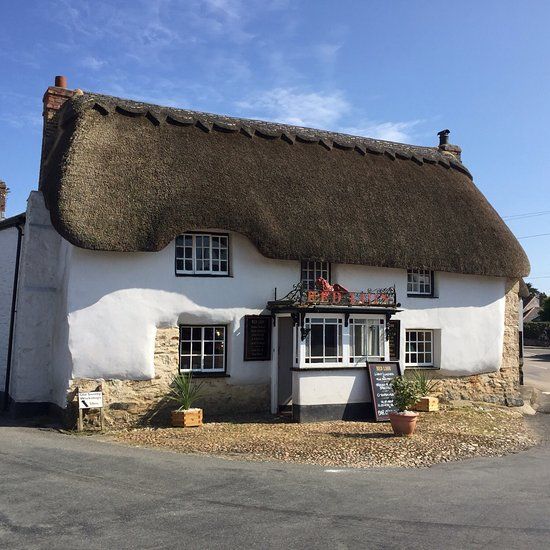
The Helford River
The Helford River is a large estuary located in Cornwall, England, known for its scenic beauty, marine ecology, and popular tourist destinations. It is approximately fifty kilometers in length, providing secluded beaches, villages, and tree-fringed creeks that boast a wealth of marine wildlife. The river is an excellent base for water sports, including kayaking, sailing, and snorkeling, and offers various leisure activities such as walking, birdwatching, and visiting gardens. The area is also important for conservation and wildlife, with Sites of Special Scientific Interest and varied habitats that make it an important breeding ground for some species[1][2][3]. The river has seven creeks, including the well-known Frenchman's Creek, made famous by Daphne du Maurier in her novel of the same name[2]. The Helford River is a popular destination for activities such as kayaking, stand-up paddleboarding, boat trips, and visiting attractions like Glendurgan Gardens and the Cornish Seal Sanctuary[3]. The river's history, geological evolution, and human interaction with it are detailed in the book "Five Million Tides," which provides a comprehensive exploration of the area's rich history and natural beauty[4]. The Helford River is described as one of the most unspoiled regions in Cornwall, with peaceful waters feeding into seven enchanting creeks[5].
Citations:
[1] https://www.cornwalls.co.uk/helford/helford_river.htm
[2] https://en.wikipedia.org/wiki/Helford_River
[3] https://www.toadhallcottages.co.uk/blog/things-to-do-helford-river/
[4] https://cornishbirdblog.com/review-five-million-tides-the-helford-river-christian-boulton/
[5] https://uniquehideaways.com/stories/107/a-guide-to-the-helford-cornwallNew Paragraph
SDR-Radio.com
What is software defined radio?
Software-defined radio (SDR) is a radio communication system where components traditionally implemented in analog hardware, such as mixers, filters, and modulators, are instead implemented using software on a personal computer or embedded system[1]. In an SDR, the properties of the radio, such as carrier frequency, signal bandwidth, modulation, and network access, are defined by software[2]. SDR software takes the broadband signal provided by the SDR device and displays, filters, and decodes it into usable signals[3]. SDRs are highly flexible and versatile, and they can be used for a wide range of wireless applications[5].
Citations:
[1] https://en.wikipedia.org/wiki/Software-defined_radio
[2] https://www.sciencedirect.com/topics/engineering/software-defined-radio
[3] https://makezine.com/article/electronics/getting-started-with-software-defined-radio-sdr/
[4] https://www.mathworks.com/discovery/sdr.html
[5] https://www.everythingrf.com/community/what-is-a-software-defined-radio
Applications of software defined radio
Some applications of software-defined radio (SDR) include:
- Military: SDR technology is widely adopted by the military for tasks such as electronic warfare, signal intelligence, aircraft navigation, communications, and missile guidance[1].
- Amateur Radio: Radio amateurs use SDR for various tasks such as radio communications, satellite tracking, and signal decoding[2].
- Mobile Communications: SDR is extremely useful in mobile communications, allowing for flexibility in choosing frequency ranges and modes better suited to current conditions[1].
- Research and Development: Many research projects benefit from SDR as it allows for the programming of radios to provide exact transmitter and receiver specifications for various purposes[1].
- Spectrum Management and Interference Mitigation: SDR is used for spectrum management and interference mitigation in various communication networks[2].
SDR technology offers flexibility, cost-effectiveness, and the ability to quickly reconfigure radio systems to support different waveforms and spectrum profiles, making it suitable for a wide range of military, commercial, and civilian applications[1][2].
Citations:
[1] https://www.researchdive.com/blog/all-you-need-to-know-about-software-defined-radio
[2] https://www.rfpage.com/what-are-the-components-of-software-defined-radio-and-its-applications/
[3] https://www.sciencedirect.com/topics/engineering/software-defined-radio
[4] https://en.wikipedia.org/wiki/Software-defined_radio
[5] https://www.everythingrf.com/community/what-is-a-software-defined-radio
Features to consider when buying a software defined radio
When buying a software-defined radio (SDR), several features should be considered to ensure it meets your needs. Some of the key features to consider include:
- Frequency Range: Different SDRs have different frequency ranges, so it's important to choose one that covers the frequencies you want to receive or transmit. For example, if you need to listen to HF transmissions, you'll need an SDR that covers HF frequencies[3].
- Flexibility and Performance: SDR systems should offer increased flexibility and improved performance. This allows for quick reconfiguration to support different waveforms and spectrum profiles, which is critical for various applications such as military and commercial radio usage[1].
- Cost: The price of an SDR depends on its features and capabilities. For beginners, starting with a low-cost SDR and upgrading later as needs grow is a common approach[3].
- Compatibility and Platform: Consider the compatibility of the SDR with your existing systems. Some SDRs are cross-platform, while others may be limited to specific operating systems like Windows[2].
- Antenna Ports and Connectors: Some SDR models offer multiple antenna ports and connectors, which can be advantageous for different applications[2].
- Electrical Shielding: Good electrical shielding is important to prevent interference and ensure the quality of the received signals[2].
- Manufacturer and Support: It's advisable to choose SDRs from manufacturers with good documentation and support, especially for those new to SDR technology[2].
By considering these features, you can make an informed decision when purchasing a software-defined radio that best suits your specific requirements.
Citations:
[1] https://www.sciencedirect.com/topics/engineering/software-defined-radio
[2] https://hagensieker.com/2022/06/28/selecting-a-software-defined-radio-rtl-sdr/
[3] https://rssl.lk/2023/07/27/sdr-buying-guide/
[4] https://www.researchdive.com/blog/all-you-need-to-know-about-software-defined-radio
[5] https://www.rfpage.com/what-are-the-components-of-software-defined-radio-and-its-applications/
Advantages of using a software defined radio over traditional radios
The advantages of using a software-defined radio (SDR) over traditional radios include:
- Flexibility and Reconfigurability: SDR technology allows for quick reconfiguration to support different waveforms and spectrum profiles, offering increased flexibility and improved performance. This is particularly beneficial for military and commercial radio users who need to rapidly adapt to changing requirements[1].
- Cost-Effectiveness: SDRs offer a flexible and cost-effective solution, as the same hardware platform can be used for several different radios. Additionally, upgrades and reconfigurations can often be done remotely, providing considerable cost savings[1].
- High Performance: SDRs can achieve very high levels of performance, and this performance can be changed by updating the software, providing a level of adaptability that is not possible with traditional hardware-based radios[1].
- Wide Range of Applications: SDR technology is suitable for a wide range of applications, including military, amateur radio, mobile communications, research and development, spectrum management, and interference mitigation[2][5].
- Spectrum Monitoring and Interference Mitigation: SDRs are used for spectrum monitoring and interference mitigation in various communication networks, making them invaluable for ensuring efficient use of the radio frequency spectrum[5].
In summary, the advantages of SDRs include their flexibility, cost-effectiveness, high performance, and suitability for diverse applications, making them a compelling choice for many radio communication needs.
Citations:
[1] https://www.electronics-notes.com/articles/radio/sdr-software-defined-radio-receiver/sdr-basics.php
[2] https://www.researchdive.com/blog/all-you-need-to-know-about-software-defined-radio
[3] https://www.everythingrf.com/community/what-is-a-software-defined-radio
[4] https://www.wirelessinnovation.org/Benefits_of_SDR
[5] https://www.rfpage.com/what-are-the-components-of-software-defined-radio-and-its-applications/
Most common types of software defined radios available on the market
The most common types of software-defined radios (SDRs) available on the market include a wide range of products designed for various applications. These can be categorized based on their intended use and features. Some of the common types of SDRs available are:
- Military-Grade SDRs: These are designed for defence, security, and mission-critical applications. They are highly capable and offer support for multiple wave fronts, in line-of-sight, ground-to-air, and other mission-critical applications. Companies like BAE Systems plc, Northrop Grumman Corporation, and Raytheon Technologies Corporation are prominent manufacturers in this space[1].
- Consumer-Grade SDRs: These are more affordable and cater to consumer enthusiasts. They come in a variety of form factors, ranging from small portable devices to more precise and robust equipment. They are suitable for applications such as amateur radio projects, Wi-Fi, Bluetooth, and cellular network setup, signal analysis, and exploration of wireless communication systems[2][4].
- Specialized SDRs: There are specialized SDRs designed for specific purposes, such as spectrum monitoring, interference mitigation, radar, test and measurement, medical applications, and high-frequency trading. These SDRs offer specific features tailored to their intended use[5].
These SDRs vary in terms of performance, cost, and application, catering to a diverse set of users with different needs and requirements.
Citations:
[1] https://www.fortunebusinessinsights.com/blog/top-10-software-defined-radio-companies-10630
[2] https://rssl.lk/2023/07/18/popular-sdrs/
[3] https://saabrds.com/latest-trends-in-software-defined-radios-sdrs/
[4] https://www.embedded.com/selecting-the-right-software-defined-radio-solution-for-your-application/
[5] https://www.everythingrf.com/community/what-is-a-software-defined-radio

